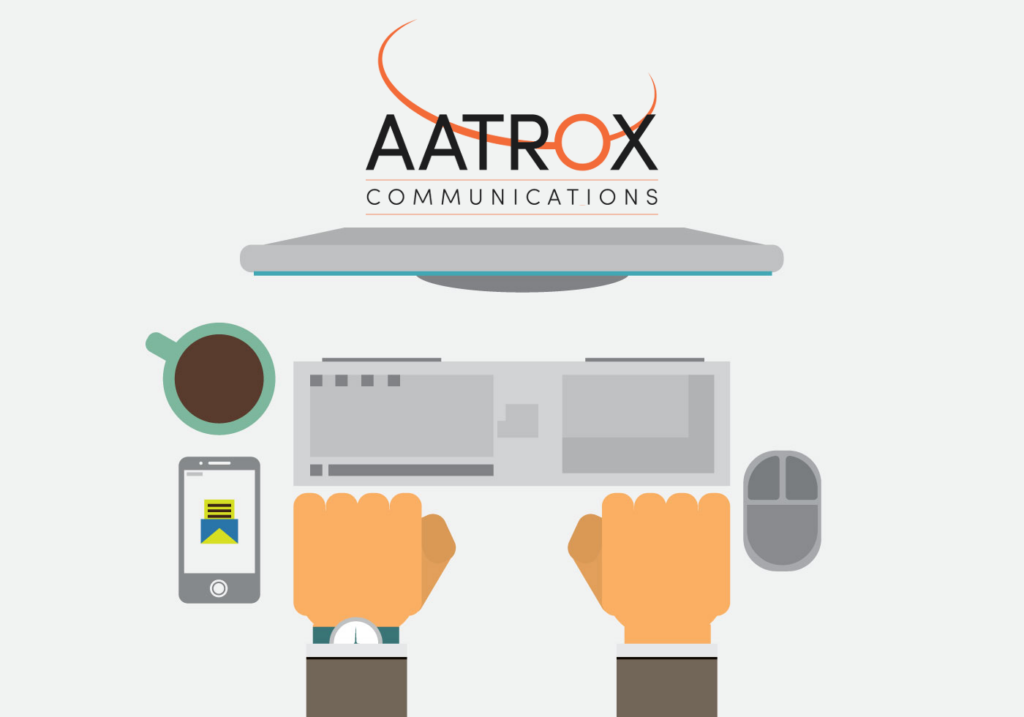Although most modern business owners appreciate the role of VoIP as a useful communication tool, not all that many of them know the ins and outs of how it all works – only that it works well.
The quick textbook definition of VoIP is Voice Over Internet Protocol, a system of standards introduced in 1995 that allows people to make phone calls over a high-speed Internet/broadband network. Your voice is converted to a digital signal, sent through the network, and converted back into traditional phone signal at the other end.
Using VoIP can turn any call into a person-to-person local call, so need for long-distance or out-of-area charges.
VoIP service also can allow data to be sent just as easily through the digital network alongside any voice information. Both voice and data are treated the same electronically.
What’s exciting about a business VoIP system is that is replaces traditional analog phone systems, where you could only send voice or data, one line at a time – this meant that if someone in your company was sending a fax over one line, no one else could use that line until the fax was sent. Remember this from dial-up days?
Plus, businesses would have to pay varying charges based on where they were calling and when they were calling, But with VoIP, you can easily talk to anyone while you’re using your computer.
A brief history of VoIP
It may surprise you to hear that VoIP, as we know it, has been in use for the last 20 years.
VoIP was originally developed around 1995 by VocalTec, an Israeli telecommunications equipment provider and was known simply as InternetPhone.
To use the InternetPhone, each user had to install the software onto their computers, which according to a Fortune article from 1996 was a complete drag, attach a microphone and wait for the long pauses between sentences.
Despite its growing pains, companies such as Intel and Microsoft were interested and now 20 years later – the VoIP market has grown from a small 500,000 users in 1996 to an estimated 1 billion users in 2018.
By 2003, the amount of IP telephony calls grew from 1% to 25% of all voice calls. Different companies were introducing their own VoIP switching software, and the coinciding timing of broadband Ethernet service saw the quality of the service and connectivity improve.
Consumers had quickly realised the improved costs associated with a VoIP service, particularly with long-distance calls, and multinational companies also embraced the advantages associated.
In 2004, Skype had essentially taken over VoIP calling, however a number of companies began popping up providing a unified communications service.
This combined all means of communication necessary for a business including fax, phone calls, email, instant messaging, web conferences and more.
How does VoIP work?
The key to Voice Over IP is the hardware. If you use a computer, your data goes through a broadband modem to the Internet and then is received by a computer on the other end. Phone calls, on the other hand, go through a SIP-compatible phone and then through a special phone adapter to convert them into digital signals. Then they also go through the Internet and a received by a phone on the other end and converted into an analog phone signal.
Depending on the configuration of your company’s VoIP phone and service plan, you will likely have a variety of options available such as call forwarding and conference calls. You also might have discounts for calls to others in the same digital network. Or, in some cases, you can call anyone but only those on the same network can access all the extra features.
You can also manage your network service through your computer and even bring wireless phones into your network.
In order to access and optimize VoIP service, you’ll need to set up something called SIP Trunking to establish different digital phone lines.
Why businesses can benefit
Setting up a VoIP network makes any call a local call, it also could be used to easily connect employees, even if they’re not in the same geographic proximity. Callers might believe employees may be sitting next to each other when they actually could be telecommuting from any location in the world.
It also could be useful to businesses looking to save money. If the VoIP system runs over a digital network, they may be able to cancel any contracts with the local phone company and not have to worry about paying long-distance charges. This can allow a company to have a smaller physical footprint while still having plenty of connected employees.
Companies also don’t have to dedicate a room to phone equipment. Because VoIP systems are digital-based, all you really need is a computer and the actual phones.
If you’re looking to learn more about SIP and other VoIP technologies, check out our additional resources below. Alternatively, feel free to get in touch with one of our SIP trunking specialists for a closer look at your business and how we can help.
Further Reading
Aatrox Communications is an Australian owned and operated full service SIP trunk provider. We specialise in connecting the traditional telephony network to the internet for small and large businesses.

